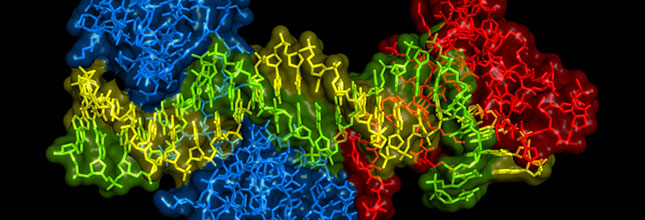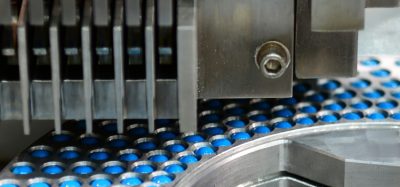Detection, quantification and visualisation of protein interactions for hit profiling by high content screening

This pharma webinar provides an overview of how compound profiling using the PLA® (Proximity Ligation Assay) technology can be used for in situ analysis of protein interactions by high content screening as part of the hit-to-lead workflow, the key advantage being the ability to provide evidence for target engagement of the compound.
Alongside established drug target classes, innovative approaches are addressing previously undruggable target classes such as protein–protein interactions. The new Duolink® in situ kits are an excellent tool to visualize and quantify protein interactions in fixed cells and tissues samples – not only in a single experiment but also in high-throughput screening applications. The microtiter plate format allows for high-throughput screening of drug compounds affecting endogenous protein modifications and protein-protein interactions. Duolink®, which is based on the in situ PLA® (Proximity Ligation Assay) technology, is a highly sensitive and selective way of detecting proteins and enables the use of unmodified primary cells. Compound Profiling using PLA® can be used as part of the hit-to-lead workflow and the key advantage is the ability to provide evidence for target engagement of the compound.
Keynote speaker
Dr. Bernhard Ellinger (Principal Scientist, European ScreeningPort)


Proximity ligation is a highly specific and sensitive technology to monitor individual proteins, their interactions and post-translational modifications in situ. It provides single molecule resolution and objective and unbiased quantification in cells and tissues on endogenous expression levels. The European ScreeningPort has optimized the PLA® technology for use in an automated 384-well screening format and has also implemented routines for automated image analysis including spot detection, localisation and quantification. In this presentation, we will present a case study of a small molecule drug discovery project performed in collaboration with a biotech partner. The target mechanism involved the disruption of the interaction between amyloid ß oligomers and RAGE (Receptor for Advanced Glycation Endproducts). Profiling of compounds during Hit-to-Lead stages has involved a variety of High Content functional cellular assays including PLA. We will discuss the use of PLA in 384-well format as part of a Hit-to-Lead screening cascade to monitor compound-mediated disruption of this receptor-ligand complex.
With a background in Biochemistry Bernhard Ellinger did his Ph D in Chemical Biology in the lab of Herbert Waldmann (Max Planck Institute of Molecular Physiology, Dortmund). At European ScreeningPort GmbH he is primarily involved in high throughput and high content screening and image data analysis. His core expertise lies in biochemical as well as cellular assays with a focus on label-free formats and imaging techniques. He has >3 years of experience in assay development for proximity ligation technology.
Thomas Juehne (Principal Scientist, Sigma-Aldrich)


Insight into protein pathways is critical to the drug discovery process. Protein interactions and their relocation within the cell have traditionally been studied using an over-expressed cell model or cell lysate measurements. We will present Duolink®, which is based on the in situ PLA® technology, a method that allows the direct in cell visualization of endogenously expressed proteins and their interacting partners
Tom has over 30 years of diverse and extensive research experience. Trained as an organic chemist, he has been active in life science research for the past 25 years. While at Sigma-Aldrich Tom has been engaged in several technologies. Examples include: surface modification chemistry, conjugation methodologies, bioactive nanomaterials, labeling, detection, imaging and site-specific conjugation methodologies.
The following trademarks are owned by Olink AB: Duolink® and PLA®
Supported by Sigma-Aldrich
In late 2015, Sigma-Aldrich joined forces with Merck Millipore. Their combined organisation, which operates as MilliporeSigma in the United States and Canada, is the life science business of Merck – and a global leader in the $125 billion life science industry. Their shared purpose is to solve the toughest problems in life science by collaborating with the global scientific community. Together, they offer a broad portfolio of more than 300,000 products, including many of the most highly respected brands in the industry.
Find out more: www.sigmaaldrich.com
Related topics
cGMP, Handheld Raman, PIC/S, Quality by Design (QbD), Raman Spectroscopy








